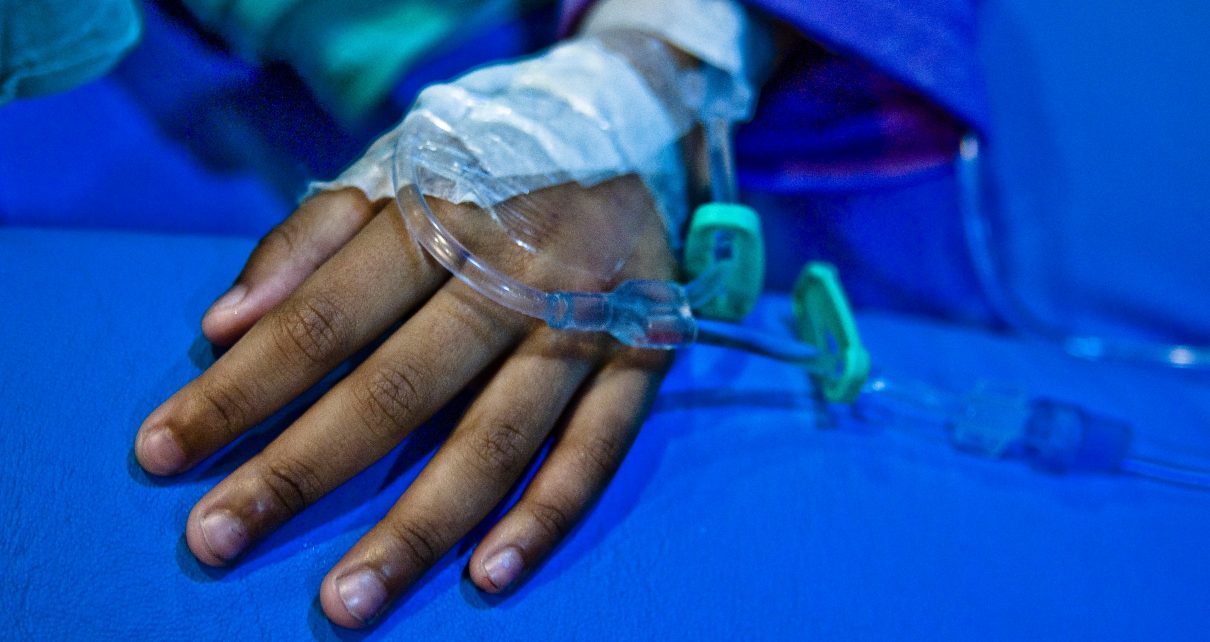Studies have repeatedly shown that Black patients’ experiences with the U.S. health care system are worse than those of white patients at almost every stage, from infancy to geriatric care. In surgical settings, Black patients experience more complications, receive fewer follow-up visits and are more likely to die. Conventional medical thinking has largely attributed such disparities to a higher occurrence of comorbidities (the presence of two or more chronic illnesses) among Black people. But a new study finds that even in apparently healthy children with no preexisting comorbidities, there were still big differences in postsurgical outcomes.
The paper, published on Monday in Pediatrics, found that after surgery, Black children had greater odds than white children of developing complications such as sepsis, unplanned reintubation or reoperation, and severe bleeding. Black children also had a nearly 3.5 times higher chance of dying within 30 days of surgery.
Study co-author Olubukola Nafiu, a pediatric anesthesiologist at Nationwide Children’s Hospital in Columbus, Ohio, says numerous factors have been proposed to explain Black patients’ worse outcomes. “We talk about economic factors, the nonavailability of hospitals in African American communities … or how sick a patient is when they present [for treatment],” he says. “We decided to ask…, ‘What if we’re dealing with relatively healthy patients?’”
Nafiu and his colleagues analyzed the postoperative outcomes of 172,549 kids who underwent inpatient surgery at 186 medical centers across the U.S. between 2012 and 2017. Overall, 70.1 percent of the children were white and 11.4 percent were Black. To ensure they were only including individuals who appeared to be generally well, the researchers limited their analysis to children who had been assigned an American Society of Anesthesiologists fitness score of 1 (healthy) or 2 (mild systemic disease). Black children were 3.43 times more likely to die and 18 percent more likely to develop complications than white children.
How quickly medical professionals recognize complications and the effectiveness of the steps they take in response are important factors that can determine the quality of care patients receive, Nafiu says. And implicit bias may affect clinicians’ ability to notice complications. “Whether we want to admit it or not, there are some differences in outlook in terms of how we view patients, how we recognize when a patient is in serious trouble,” he says.
Ebony Jade Hilton, an associate professor of anesthesiology and critical care medicine at the University of Virginia, who was not involved in the study, says researchers examining this issue should consider the totality of the health impacts that structural racism has on Black patients. “We have a racism epidemic in America that has existed since 1619,” she says. “There are different traumas associated with growing up Black in America that are not experienced by others,” from environmental factors to post-traumatic stress disorder.
Camara Phyllis Jones, an epidemiologist and family physician who was president of the American Public Health Association in 2016 and was also not involved in the new paper, says scientists must consider racism, rather than race alone, when studying health outcome disparities. “It is very limiting for scientists to think of ‘race’ as a risk factor for disease,” she says. “None of us is born with a race. In race-conscious society, we are assigned a race.” Racism drives the imbalances in availability and quality of health care, she explains, as well as differences in exposures, opportunities and resources—all of which can contribute to the incidence of worse health outcomes.
Frinny Polanco Walters, a pediatrician at Boston Children’s Hospital who co-authored an article about racism in clinical settings that was published last week in Nature Medicine, says addressing care providers’ implicit bias is a necessary first step in promoting health equity. “We all have it,” she says. “For systems to be able to change, we have to start with our own biases.” Adjoa Anyane-Yeboa, a gastroenterologist at Harvard Medical School, who also co-authored the Nature Medicine article, says researchers should always consider racism as a factor in health disparities. “We’ve seen how unconscious bias and racism can play a role in many different disease states,” she says. “Even though the [Pediatrics study’s] authors didn’t specifically say that’s at play here, I would be surprised if it didn’t play even a little bit of a role.”
Ashley McMullen, an internist at the San Francisco VA Medical Center and host of the podcast Black Voices in Healthcare, who was not involved in either paper, says distorted narratives around Black patients’ biology have led to biases in the way physicians practice. “There’s still a lot of work to be done to undo a lot of this pervasive thinking around Black bodies that lead to worse care and worse outcomes,” she says. “System-level issues require system-level solutions, but it starts with us having an awareness of our own differences and our own biases.”
“Racism is a system with identifiable and addressable mechanisms…, which are the elements of decision-making structures,” Jones says. “We need to understand that people are not at higher risk because of something intrinsic to them, which we call ‘race’—because race is not intrinsic. Race is the social interpretation of how one looks in a race-conscious society, the substrate on which racism operates day-to-day. And we can do something about racism.”




